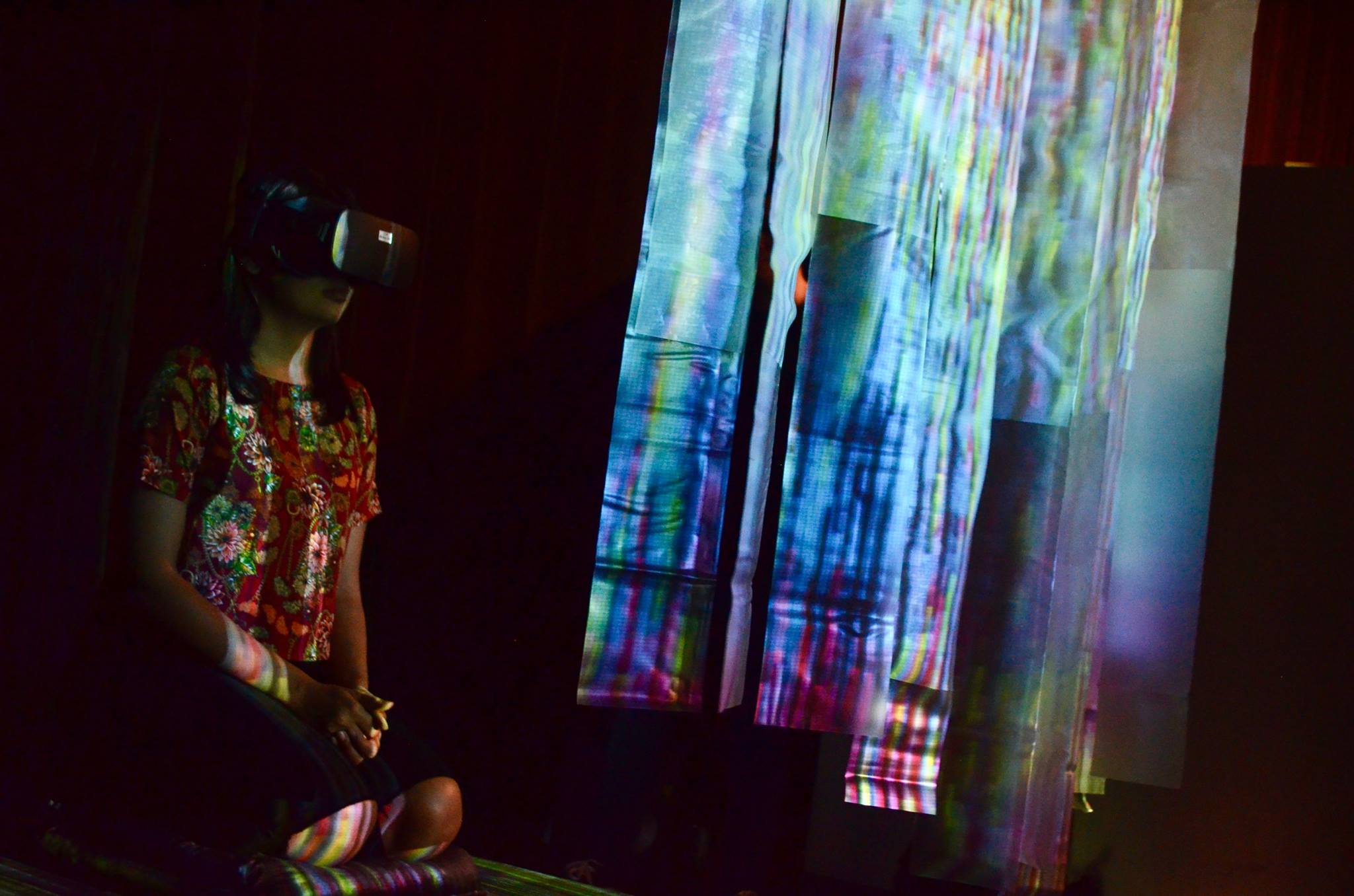The Haven
The Haven is a VR Art Installation and collaboration between Jimmz Zhang and Marina Roselli. As a physical installation, projection art, and virtual reality application, The Haven plays with the idea of space and how different digital and perceptual information is perceived. The artists want the user to reflect on their present state and question both digital and tangible realities.
The Concept
All too often users of social media attempt to cultivate their identity and create a space for themselves yet it is this nebulous beast that tends to create groupthink. The data projection uses statistics released by facebook to create an overwhelming and fully encompassing feeling. Because it is a sound visualization, all sounds in the physical installation relate to notification noises and evoke a sense of annoyance as users instinctually check their phones. Contrasting the information overload within the physical structure, the virtual environment is minimalistic and presents different forms of sensory information for the user to process in a more traditionally analogue way. This should allow the user to experience some kind of introspection on transitory nature of the virtual environment. Users often commented on how calm they felt once they entered the VR space. Here we were influenced by Second Life players who have their avatars virtually mediate. Thus, The Haven calls for a reflection of reality within the digital and sensory spheres.We wanted to create a physical and virtual space that plays around with elements traditionally associated with the two thus creating an internal conflict within the user. For the physical space, users are introduced to data visualizations of social media activity so they can reflect on their impact/control within the digital landscape.
VR Storyboard
The VR story needs to use simple visuals with strong emotional impact. I created a storyboard of the experience to illustrate the important states of consciousness the user should enters at different stages of the experience. Once the Occulus Rift is on, the user will initially see a black or darken virtual environment simulating the transition of closing their eyes and entering into an imagined, meditative visualization. Comprised of a virtual environment, the user is presented with a naturalistic setting evoking a sense of serenity. Each beat of the story has a specific intent to build up the intended emotional journey.
VR Experience
The VR experience is a completely cinematic without any interactivity. By being forced into a state of inactivity and without directing the movement of the experience, the user is placed into a state of serenity and contemplativeness. Though the intended film is over 9,000 frames, we shortened the experience and rendered at a much lower quality for the 1st prototype. Here, in the first video you can see the 360 video used for the 1st prototype (can be viewed with a cardboard). In the second video you can see a 360 automatic slideshow video of 5 different frames (can be viewed in a cardboard). These frames are rendered at the higher quality. We will need a render farm to further the intended experience at this higher quality.
Multi-Sensory
The Haven is more than just a visual experience. Within the VR story the visuals (water reflections, organic shapes such as interference patterns, flower imagery), the audio (theta waves, meditation bells), and the scents (petrichor, lavender) all come together to create a meditative state for the user to continue their journey. By activating the various senses, we want to give the user the opportunity to enter into a new mind-set and experience their surroundings from a different perspective. Within the physical installation, the data visualization is connected to the audio and sound effects to create a more embodied experience. We want the user to feel fully overwhelmed by the amount of information to reflect the constant digital activity.
User Journey Design
Because we intend the user to enter a 2nd, VR world when they sit down and put on the headset, it is important for the user to walk around the structure. As shown in the schematics, the entrance is not be placed out in the front. To control this flow, we have blocked off part of the area in which the user can enter the structure with black curtains or walls. The user needs to physically walk around and into the structure before they sit down and experience the space. The user should get acquainted with the data visualization thus allowing for reflection on that imagery when the user finally sits down inside the structure and enters VR. Further, we have hidden some of the machinery as to not interfere with the user's visual exeperience.





